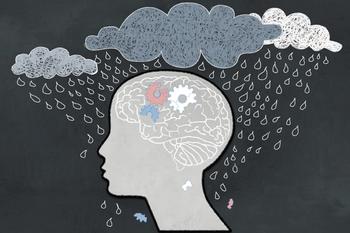
Response to: “Psychiatric Symptoms Can be Understood Even When These Symptoms Cannot Be Explained”
Dr Muller, in his piece “Psychiatric Symptoms Can be Understood Even When These Symptoms Cannot Be Explained,” makes a number of assertions about DSM-III and its successors that reflect a mischaracterization of its “descriptive approach.”
Editor’s note: Here, Drs Michael First and Robert Spitzer respond to comments made in an essay by Rene Muller, PhD. Dr Muller’s essay is also posted on this website
Dr Muller, in his piece “
One of the most important caveats regarding the use of the DSM is that the “diagnostic categories, criteria, and textual descriptions are meant to be employed by individuals with appropriate clinical training and experience in diagnosis…The specific diagnostic criteria included in DSM are meant to serve as guidelines to be informed by clinical judgment and are not meant to be used in a cookbook fashion.”5 An important part of this need to exercise clinical judgment is determining the patient’s subjective experience of a symptom before deciding whether it fulfills the diagnostic requirement of a particular criterion. One of the central points that we repeatedly emphasize when training researchers and clinicians in how to properly use the Structured Clinical Interview for DSM-IV (SCID) is the need to have the patient provide the interviewer with his or her subjective experience of a behavioral symptom. For example, if a patient were to say, during the assessment of the criteria for a Major Depressive Episode, that he has not wanted to get out of bed in the morning for the past two weeks, the interviewer needs to find out why he does not want to get out of bed before determining which criterion for major depressive disorder this might represent. Does it reflect a pervasive lack of interest in participating in activities, which would qualify for Criterion A(2)? Does it represent extreme fatigue which would qualify for Criterion A(6)? Does it represent extreme indecisiveness about what to do after getting out of bed, which would qualify for Criterion A(8)? Or does the patient want to avoid falling secondary to severe vertigo that he developed as a side effect of a medication, in which case the behavior would not count towards the diagnosis of any mental disorder?
The fact that clinicians may overly focus their attention on superficial symptoms without regard to understanding their clinical significance reflects a problem in how clinicians are actually using the DSM in practice. Whether this reflects a deficiency is how clinicians are trained to make psychiatric diagnosis6 or just the pressures put on clinicians to evaluate too many patients in too short a time, the source of the problem is outside of the DSM. Dr Muller’s inclusion of the case of his friend “Adam” is a perfect illustration of the problem. He recounts how “the doctors got him wrong from the start,” underestimating the role that drugs and alcohol played in his behavior, noting that “at different times the diagnosis was bipolar I disorder, schizophrenia, and schizoaffective disorder, in spite of the DSM-III prohibition against making these diagnosis in someone who had used illicit drugs and alcohol heavily for several years.” The source of Adam’s misdiagnosis was the fact that his doctors ignored the diagnostic rules that were included in the DSM precisely for the purpose of encouraging the clinician to consider the etiological role of substances in the presentation of the patient’s symptoms. So rather than the DSM-III being “a virtual invitation to get a psychiatric diagnosis wrong,” built into the DSM definitions are exclusion and other criteria that serve to encourage the clinician to get the diagnosis right.
Dr Muller concludes his piece with the admonition that “in a future edition, the DSM…needs to take into account the patient’s subjectivity and the meaning or context of his symptoms-not by simply tacking on another axis, but by making the articulation of this subjective experience the principle objective of the diagnosis process.” While such goals are potentially laudable, does Dr Muller have any concrete suggestions for how this might be achieved in a way that would be reliable, valid, and clinically useful? As is demonstrated in Dr Muller’s piece, it is relatively easy to point out the shortcomings of the current system (of which there are many) but much more challenging to come up with a viable alternative that solves the problems elaborated in the critique. Dr Muller is undoubtedly aware that a revision of the DSM is currently underway. From Dr Muller’s perspective, do any of the proposed changes in DSM-5 encourage the clinician to put more focus on the patient’s subjective experiences? Our reading of the DSM-5 draft proposals, which focus primarily on developing dimensional severity measures and assessments of cross-cutting symptoms, if anything move the system away from the focus on the patient’s internal world and instead emphasize quantification of the symptom severity. While this may have the potential to enhance the clinician’s ability to monitor symptomatic improvement over time, it is unlikely to promote any deeper understanding of the patient’s problems or life history.
References:
References
1.
American Psychiatric Association.
Diagnostic and Statistical Manual of Mental Disorders, 3rd ed.
Washington, D.C: American Psychiatric Association; 1980:7.
2.
Beck A, Ward C, Mendelson M, Mock J, Erbaugh J. Relability of psychiatric diagnosis: II. A study of the consistency of clinical judgments and ratings.
Am J Psychiatry
. 1962;119:351-7.
3.
Sandifer M, Pettus C, Quade D. A study of psychiatric diagnosis.
J of Nervous and Mental Disease
. 1964;139:350-6.
4.
Ward C, Beck A, Mendelson M, Mock J, Erbaugh J. The psychiatric nomenclature.
Arch Gen Psychiatry
. 1962;7:198-205.
5.
American Psychiatric Association. Diagnostic and Statistical Manual of Mental Disorders, 4th ed, Text Revision. Washington, DC: American Psychiatric Association; 2000:xxxii.
6.
Tucker GJ. Putting DSM-IV in perspective. Am J Psychiatry. 1998;155(2):159-161.
Newsletter
Receive trusted psychiatric news, expert analysis, and clinical insights — subscribe today to support your practice and your patients.














